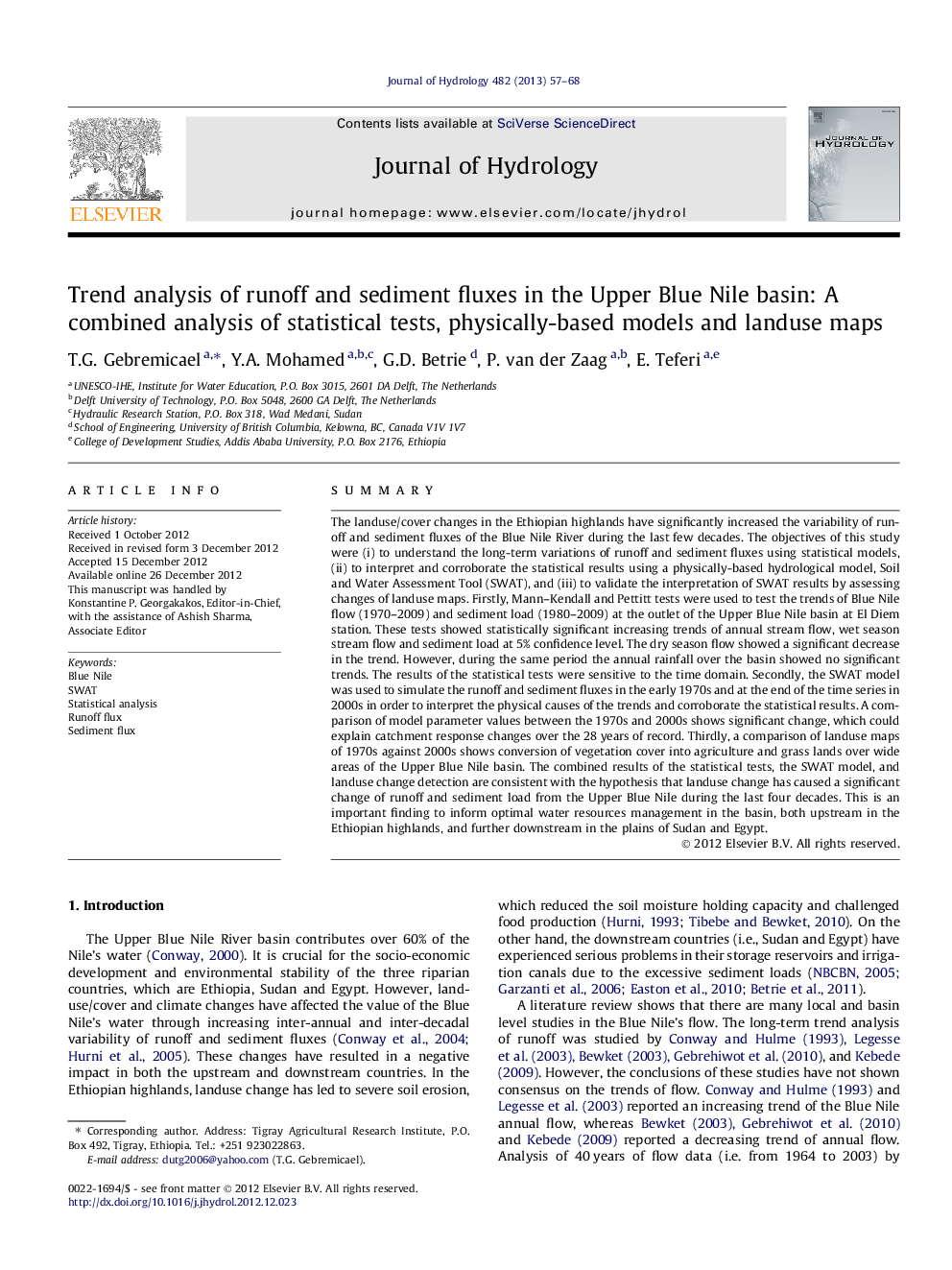| کد مقاله | کد نشریه | سال انتشار | مقاله انگلیسی | نسخه تمام متن |
|---|---|---|---|---|
| 4576458 | 1629966 | 2013 | 12 صفحه PDF | دانلود رایگان |

SummaryThe landuse/cover changes in the Ethiopian highlands have significantly increased the variability of runoff and sediment fluxes of the Blue Nile River during the last few decades. The objectives of this study were (i) to understand the long-term variations of runoff and sediment fluxes using statistical models, (ii) to interpret and corroborate the statistical results using a physically-based hydrological model, Soil and Water Assessment Tool (SWAT), and (iii) to validate the interpretation of SWAT results by assessing changes of landuse maps. Firstly, Mann–Kendall and Pettitt tests were used to test the trends of Blue Nile flow (1970–2009) and sediment load (1980–2009) at the outlet of the Upper Blue Nile basin at El Diem station. These tests showed statistically significant increasing trends of annual stream flow, wet season stream flow and sediment load at 5% confidence level. The dry season flow showed a significant decrease in the trend. However, during the same period the annual rainfall over the basin showed no significant trends. The results of the statistical tests were sensitive to the time domain. Secondly, the SWAT model was used to simulate the runoff and sediment fluxes in the early 1970s and at the end of the time series in 2000s in order to interpret the physical causes of the trends and corroborate the statistical results. A comparison of model parameter values between the 1970s and 2000s shows significant change, which could explain catchment response changes over the 28 years of record. Thirdly, a comparison of landuse maps of 1970s against 2000s shows conversion of vegetation cover into agriculture and grass lands over wide areas of the Upper Blue Nile basin. The combined results of the statistical tests, the SWAT model, and landuse change detection are consistent with the hypothesis that landuse change has caused a significant change of runoff and sediment load from the Upper Blue Nile during the last four decades. This is an important finding to inform optimal water resources management in the basin, both upstream in the Ethiopian highlands, and further downstream in the plains of Sudan and Egypt.
► Long-term variations of hydrology and sediment were analyzed using three methods.
► We used statistical tools, SWAT model and landuse map detection for trend analysis.
► Statistical tools indicate increasing trends of runoff and sediment load.
► Comparison of model parameters and landuse map detection confirmed the changes.
► The changes were attributed to change of natural cover into agricultural crops.
Journal: Journal of Hydrology - Volume 482, 4 March 2013, Pages 57–68